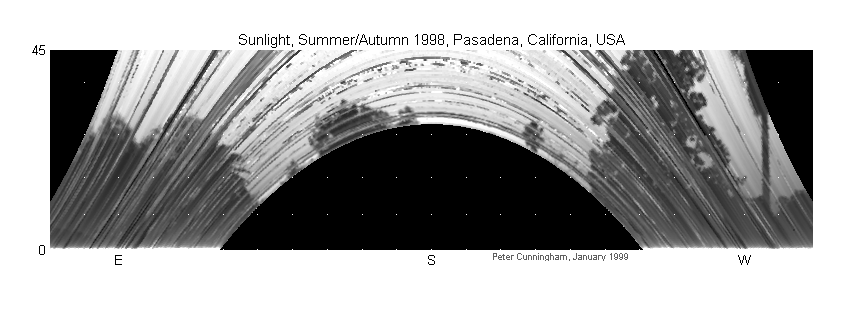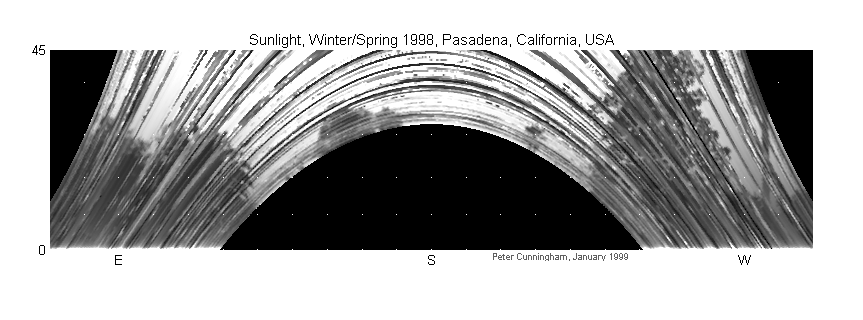Solar Raster Photography

Here is another picture taken six months earlier. You will notice the trees were a little thinner and the weather a little more variable. Peter has three and a half years of data. That's enough for seven images.

Let me say that once again. These pictures were taken without the aid of cameras or lenses. That may be obvious from the discussion above. Still, most observers find the fact startling. I encourage you to ponder their production, which relies on the motion of the earth, the properties of light, and the persistence of computers. Enjoy.
Ward Cunningham began collecting his own daylight data in the fall of 1998.
© 1999